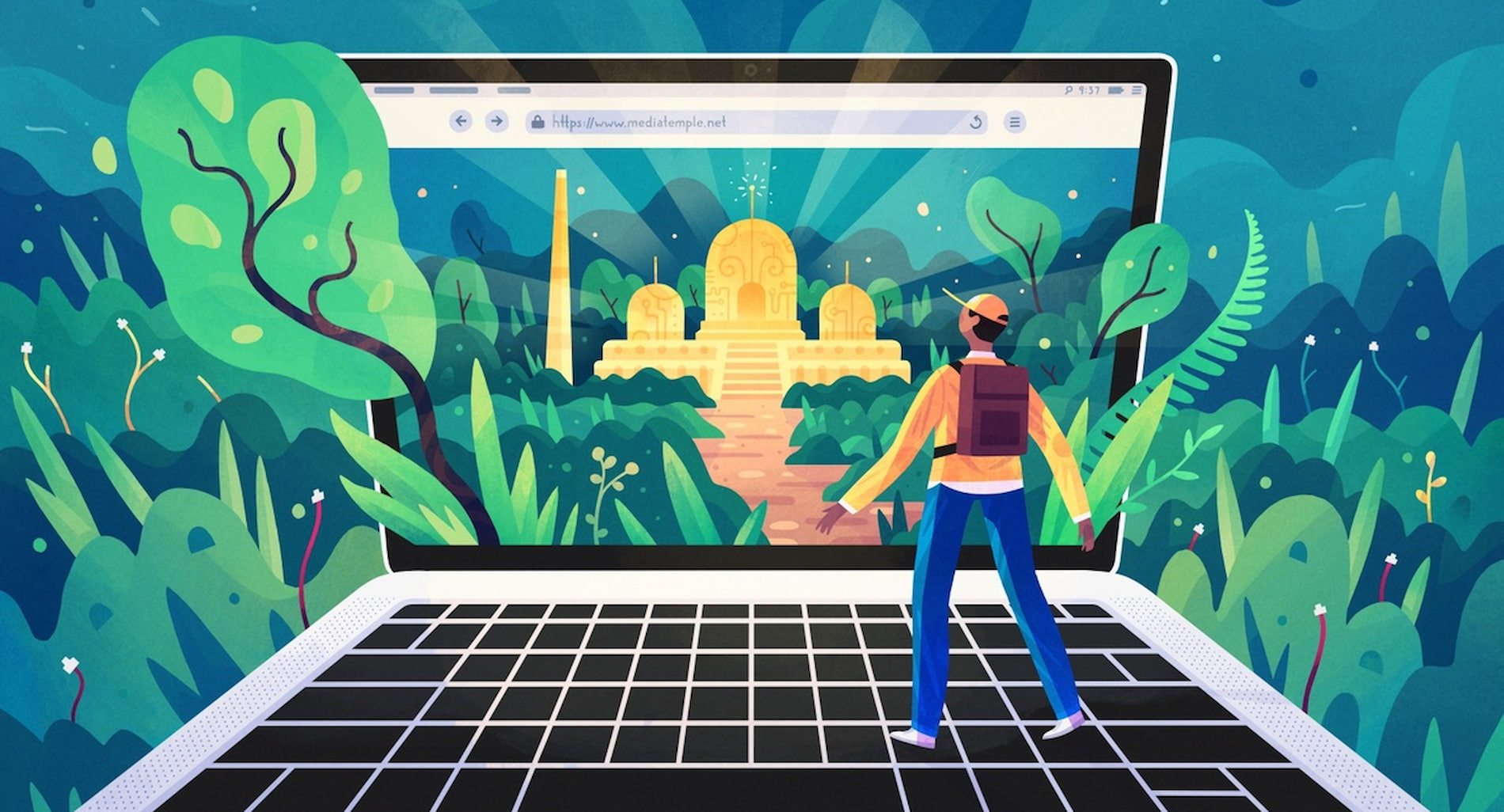On January 28th, 2022 we hosted an online workshop and met with experts in the field of design. The workshop was meant to facilitate a safe space to brainstorm about topics, trends and inspiration we wanted to encapsulate this year at the Design Matters 22 event.

Some of the topics we covered included:
- Hot topics in design 2022
- How the role of the designer is changing
- Urgent issues we can solve through design
- Ideas suggested from DM community
With the help of experts from all around the world, we are able to get insider knowledge from different design movements and societal trends that aren’t present in Scandinavia. Being that we live in the homogenous region that is Denmark,It is imperative that we consider all viewpoints and experiences so we can think critically and with a wider perspective on different design issues communities are facing.
Our committee included speakers from our past events and some individuals we have grown fond of. Despite our different zip codes and time zones, we were able to make this happen by hosting on the platform Butter, with moderator Ross Chapman.
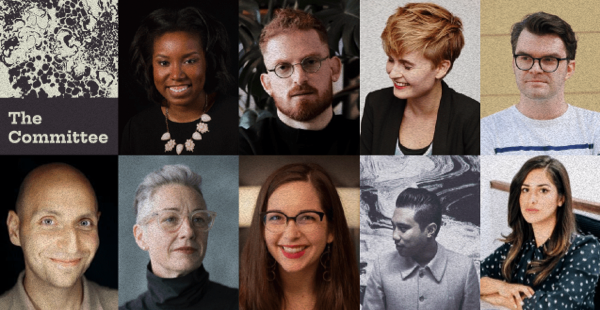
Introduction to the committee
So how did we narrow it down to the nine pictured above, and why did their voices and opinions matter? We briefly highlighted above the importance of collaboration amongst individuals who are different, but a lot of thought went into including people from all aspects of design to truly reflect the attendees and supporters that make up the DM community. The committee was made up of UX designers, Content creators and designers, Graphic Designers, Illustrators, Writers, Product designers and developers and so on. Above all people who are excited, passionate and obsessed with design, and lastly people who work for big and small companies.
You can connect, follow, and find out more about the committee members below:
- Jordan Craig
- Karoline Kirchhübel Andersen
- Chad Wright
- Andrew Schmidt
- Vitaly Friedman
- Cameron Campbell
- Hazel Jennings
- Kjegwan Leihit
- Yesenia Perez-Cruz
The Process
You’re probably wondering how the thinking process was structured online and without ever meeting some of the individuals IRL. We’ll try our best to break down in a few steps how this ended up playing out.
- The Design Matters team introduced ourselves and our roles within the company. To create a better understanding of ourselves as individuals and our skill sets. After our introduction, the chosen people in our committee proceeded to do the same
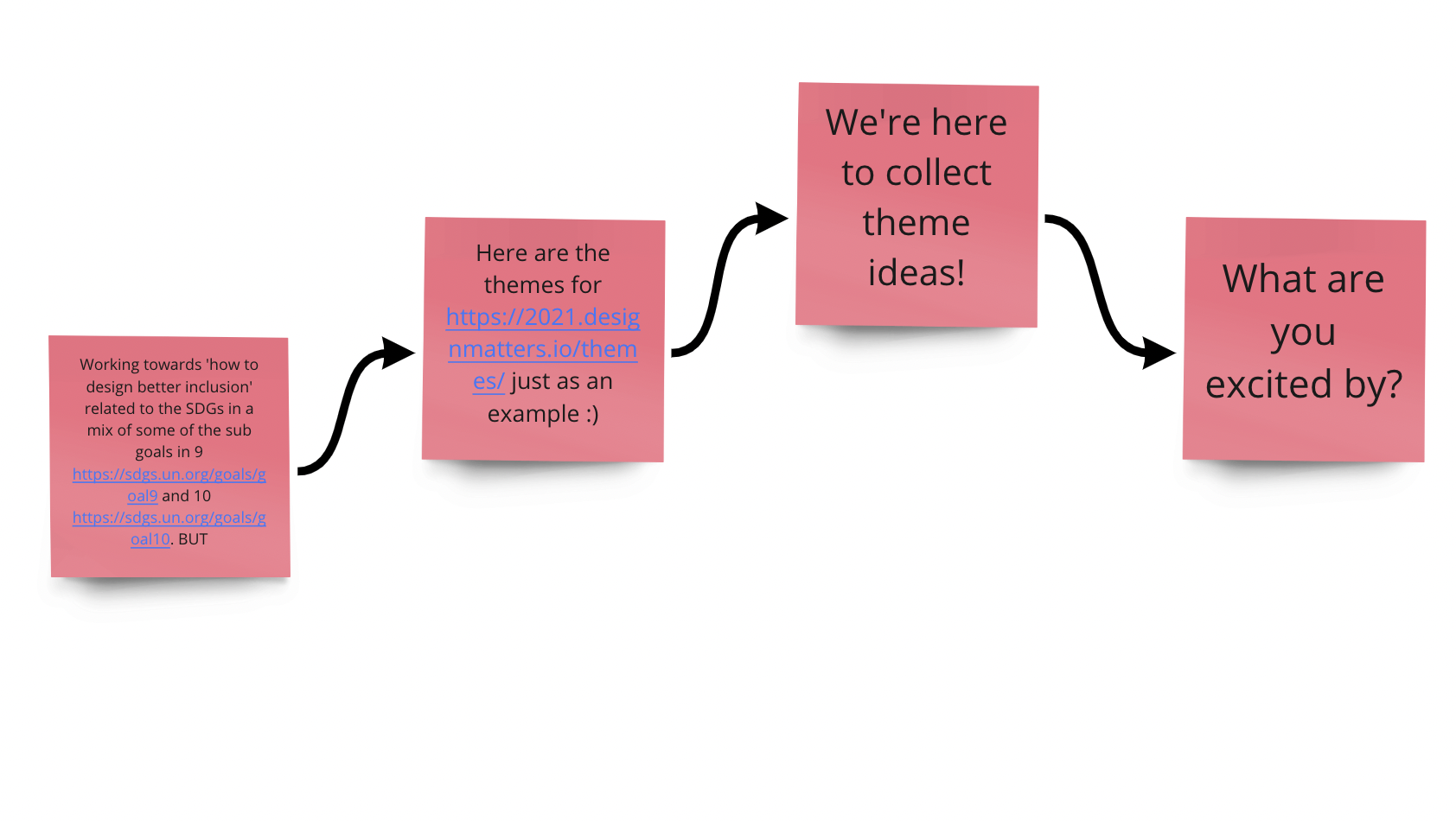
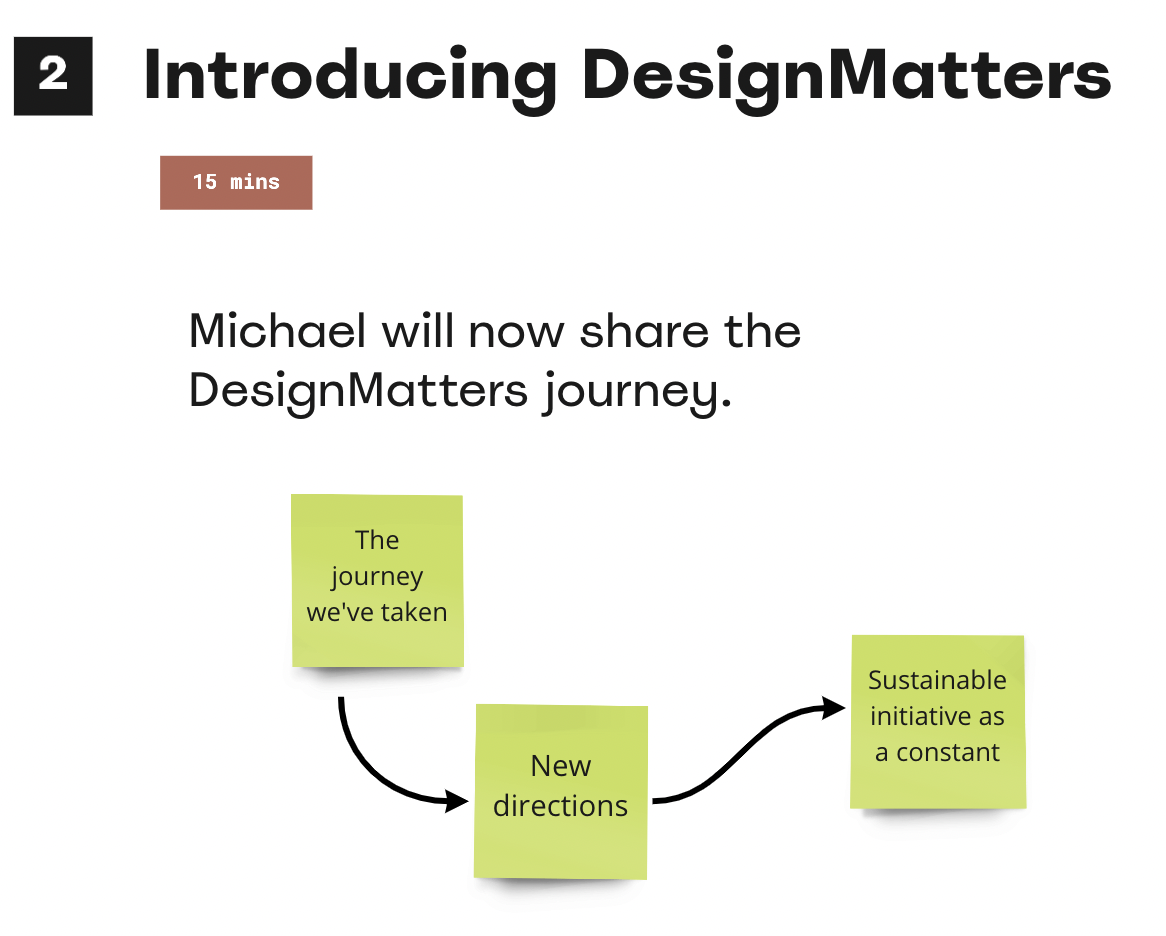
- Once we established a level of trust and familiarity with each other, we asked each person to identify what they were looking forward to in design for the next few years on a Miro Board.
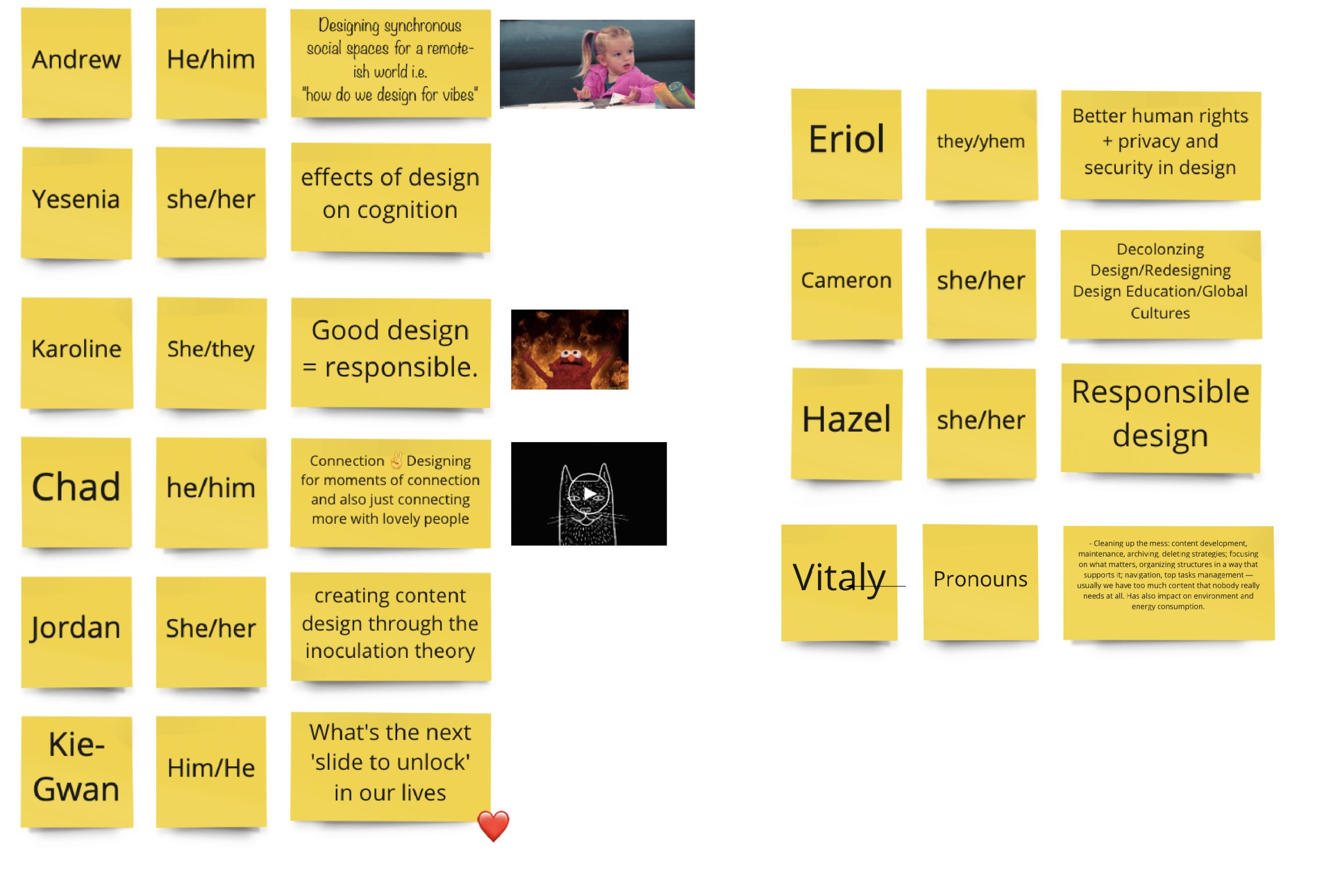
- Which allowed us to segway into talking about our ideas and topics briefly highlighted above, the committee was instructed to go into breakout rooms that were randomly selected to further facilitate different viewpoints.
- After much discussion, the breakouts rooms ended and the committee was asked to put their final ideas on the Miro Board, and vote by placing a pink dot into what topics that spoke to their heartstrings.
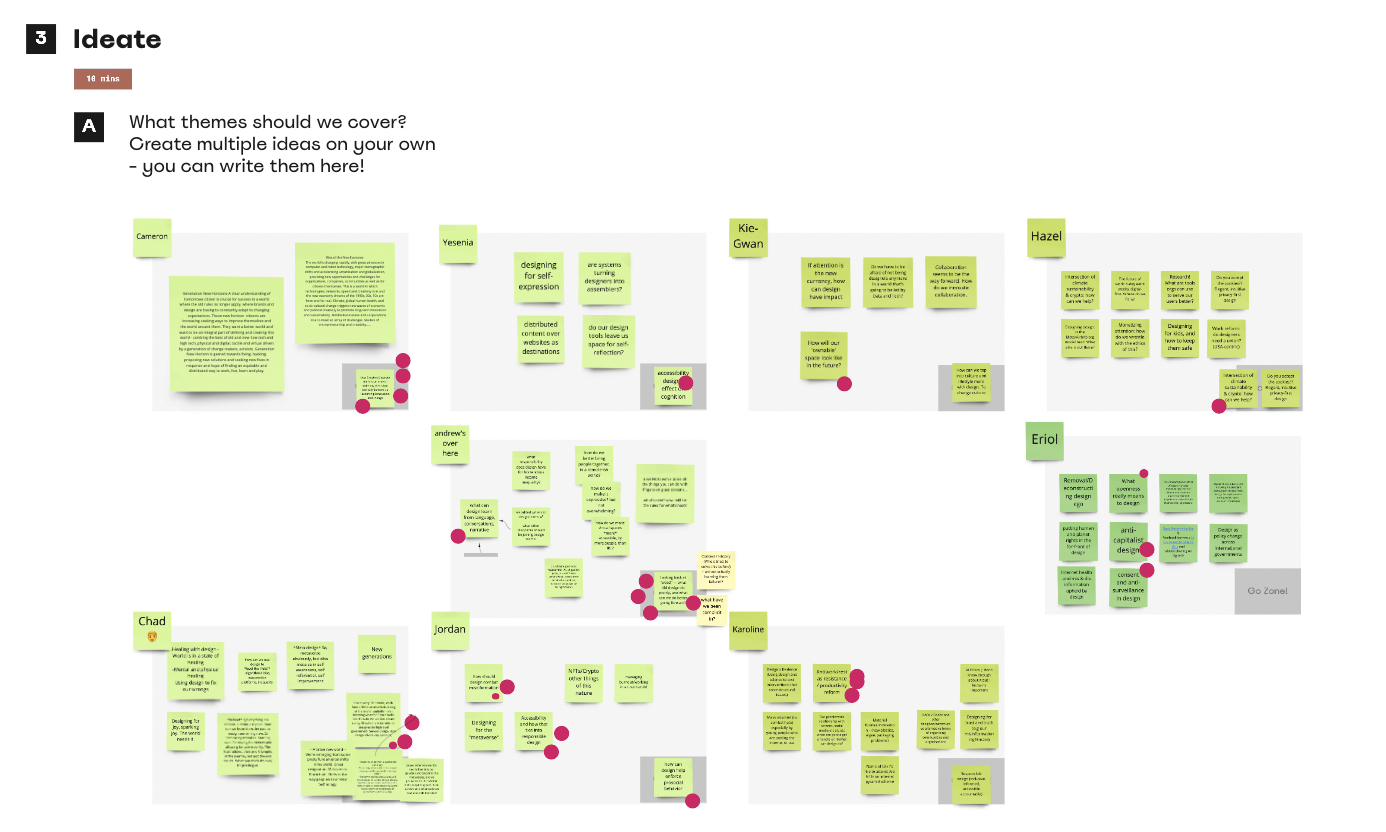
How we ended up with the Themes
After everyone voted we were able to take the top votes on ideas and topics, and dove deeper internally into identifying the overarching themes. The sentiment of the committee and our own feelings seemed to be geared towards a future of radical change. Not only were we all questioning and thinking critically about the mistakes in design, but the mistakes made by humans throughout history primarily in the western world. You could argue that there is a common awakening amongst the social order of humanity.
The top topics taken from the workshop were:
- New Creative Disorder -bottom up leadership innovation and change
- looking back at “web2” — what did design do poorly, and what can we do better going forward?
- Uncertainty. The world, work, future, life is so uncertain. Living at the end of capitalism, not knowing what the future looks like. How do we use it to create clarity? Should there be roles for designers in high level government. Service design. How design affects city planning.
- Antiwork/rest as resistance / productivity reform
- Accessibility and how that ties into responsible design
- How should design combat misinformation
The top ideas taken from the workshop were:
- Inclusive/universal design with a focus on language
- Strong, unapologetic & committed messaging/design choices – eg absurd content design or specific UIs like Co—star’s grayscale UI.
- Trauma forward / informed design
- Design activism and how to design an environmentally sustainable future (https://creativebraverycollective.com/) + Policy design/strategic design
- Futures design/speculative design + Future Thinking (Futures Literacy by UNESCO, https://en.unesco.org/futuresliteracy/about )
- Promoting physical and mental wellbeing in the digital space- prompted by the Pandemic.
- Material ecology-Neri Oxman (https://oxman.com/)
- Generative design-Nervous System (https://n-e-r-v-o-u-s.com/ )
We were left with a lot to go from, so you could imagine that there was a lot of circling back and forth internally before we decided on the final three themes. To make matters a little more complicated we wanted to be as transparent as possible this year and highlight design mistakes and outdated mindsets, while simultaneously also empowering the community in a world that feels doom and gloom. It was crucial to us not to sugar coat anything this time around, because true change and innovation happens when you’re brutally honest and open to unlearning. We decided to go ahead with the final three themes.
- What are we Responsible for?
- Decolonizing Design
- A Little Pick-me-up
You can read more about the Themes here, Leading up to the conference we will analyze each theme and provide insights and inspiration for the Design Matters community. If you’d like to suggest any workshop or talk ideas please feel free to comment and submit any suggestions through this link


